Moths seem harmless enough when they’re flying around outside. But any insect that gets into your home can quickly become a pest that lowers your quality of life. While they are not dangerous, moths can cause damage to your personal items. They chew on any type of fabric and are known for damaging clothing, rugs, blankets, and furniture. Some species can even get into your pantry, where they deposit their eggs! Find out how to get rid of moths inside your house instantly, including some natural remedies.
House Moths Identification

Clothes mothes often reside in areas such as closets
©Thomas Kleidysz/Shutterstock.com
“House moth” is a general term for describing moths that invade your home. And there are two primary types: pantry moths and clothes moths. These flying insects can appear brown, tan, or gray, with mottled, fuzzy bodies and wings. And they typically grow slightly larger than half an inch. If you have an infestation, you may see moths in different stages of their life cycle. You may find moth eggs, which appear like tiny, round pearls. And once they hatch, you can spot small white caterpillars. You can even find their feces and shed skins around your home.
What Causes Moths in Your House?
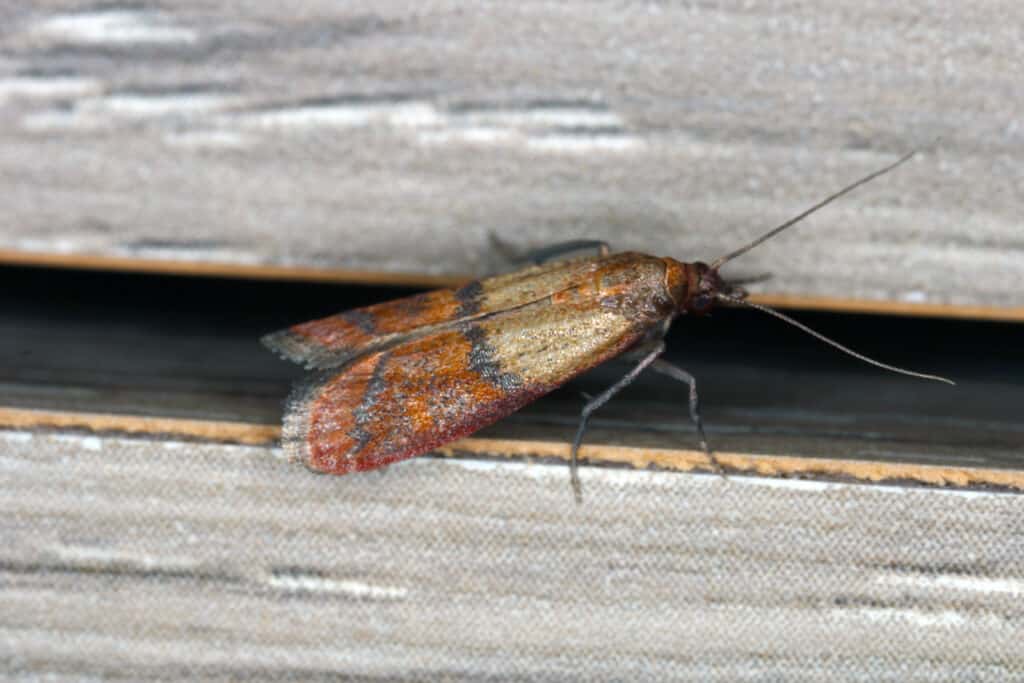
Indianmeal moths commonly attack household food products.
©Tomasz Klejdysz/Shutterstock.com
Moths can find tiny cracks in your home, where they can enter and reproduce. Or they may just fly in through an open door or window. However, one of the most common ways people get moths in their homes is through contaminated items. You might have brought something into your home recently that contained eggs or larvae, and now you have a full-blown infestation. These insects can travel on used clothing, furniture, and carpet. They can even hitch a ride in food items.
Where Do Moths Hide in Your House During the Day?

©Beliphotos/Shutterstock.com
Most moth species are nocturnal, meaning they are active at night. And during the day, they stay in hiding, away from light. Homes that have a moth problem will often find them in dark locations, like attics, closets, and basements. They can even hide in darker corners or folds of fabric in clothing or furniture.
How to Get Rid of Moths Inside Your House: 9 Proven Methods
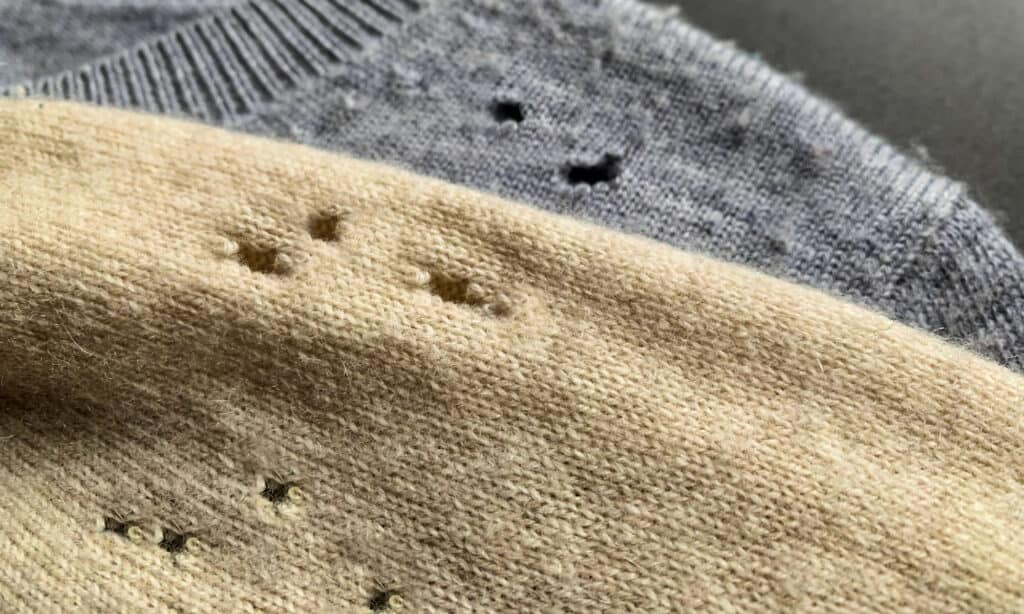
Moths can damage expensive clothing, such as cashmere sweaters.
©Little Adventures/Shutterstock.com
Try these home remedies to get rid of moths inside your house.
1. Cedar Oil and Wood

The oils from the plant leave many bugs running even though the scent is sweet and powerful.
©Madeleine Steinbach/Shutterstock.com
Repelled by the cedar’s pheromones, moths will flee when they get around cedar wood or cedar oil. If you don’t have cedar in your home, you can make a spray using cedar oil and water. Simply spray the mixture around your home, including any areas they like to hide.
2. Deep Clean
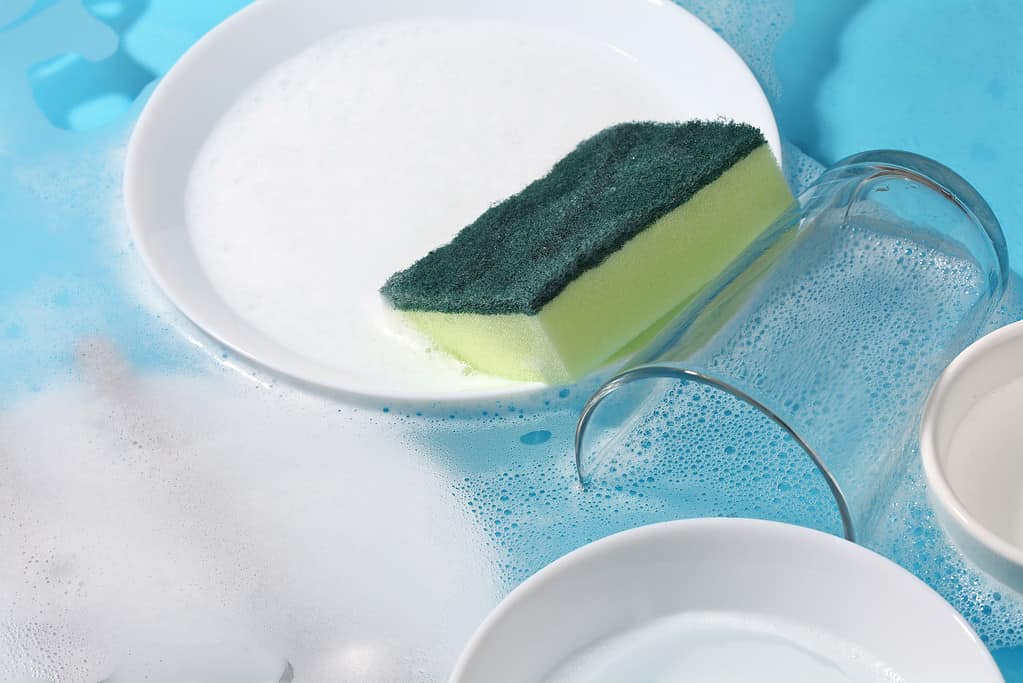
Dishware and sponge in clean water . Wash utensil after used.
©seksanwangjaisuk/iStock via Getty Images
One of the best ways to tackle a moth infestation is to start cleaning. If they’re in your pantry, remove all of the contaminated food and take it out of the house. For both pantry and clothes moths, vacuum everything. Don’t forget to get all the little nooks and crannies along the baseboards, too. Next, deep clean any infested rugs and furniture.
3. Moth Traps
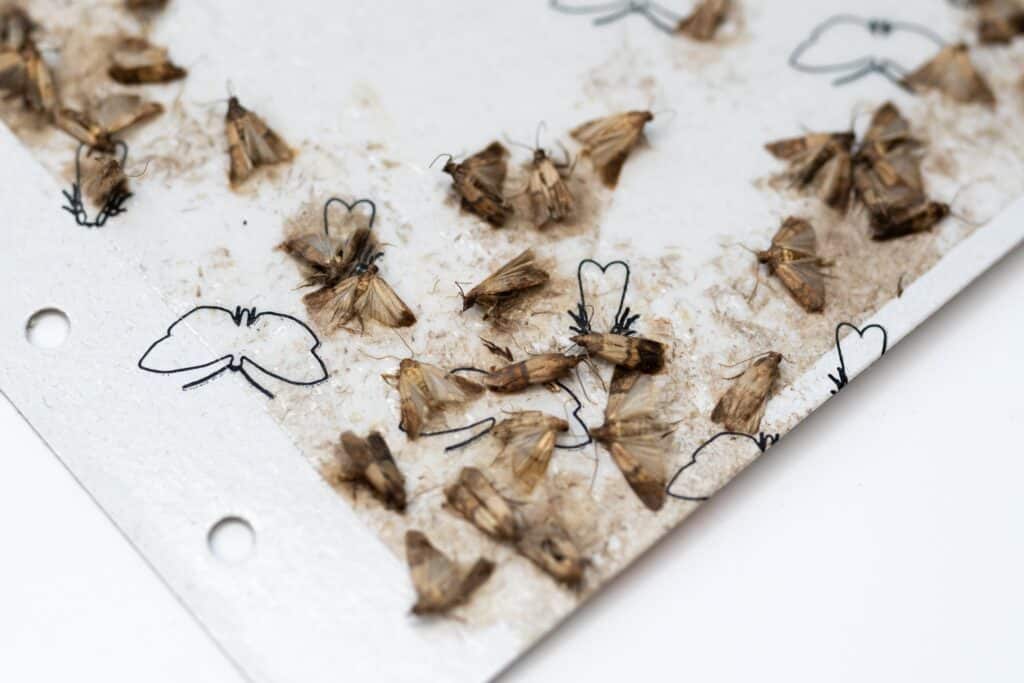
Indianmeal moths trapped on a paper card with glue
©CatwalkPhotos/Shutterstock.com
Buy inexpensive moth traps and place them around any problem areas. Many of them contain pheromones that attract the moth before they become stuck and eventually die. Most of these traps are for adults, which prevents them from reproducing. Also, don’t use mothballs. They are known for containing dangerous chemicals.
4. Hang Dried Herbs

©Lunov Mykola/Shutterstock.com
Moths hate the smell of certain herbs, such as lavender, cloves, rosemary, thyme, and bay leaves. You can crush them and place them in a breathable bag in your closet. Or you can make a repellent spray by mixing water and essential oils.
5. Seal Your Items

Store food in airtight containers to keep out moths and prevent an infestation.
©Kristen Prahl/Shutterstock.com
While placing unused items in cedar chests can help some, it is not the best method for keeping moths out. The best way to store clothing and blankets is to vacuum seal them in plastic bags. And for pantry items, place them in tightly sealed containers. But be sure to check items for signs of insects before placing them in containers. Moths and other species can travel through the grocery store before reaching your home.
6. White Vinegar

©focal point/Shutterstock.com
If your grandma swore by using vinegar for everything, she wasn’t wrong. This natural cleaner dissolves grime and even kills bacteria. Spray and wipe down surfaces with a vinegar and water mixture. Just don’t use it on certain items like hardwood, stone, and metal.
7. Freeze Belongings

Freezer, Refrigerator, Ice Cream, Store, Supermarket
©Supersmario/iStock via Getty Images
It might sound unorthodox but keeping clothing and other items in the freezer for at least 24 hours can kill the moth’s eggs and larvae. You should do this several times a year for extra sensitive items, like cashmere.
8. Wash On High Heat
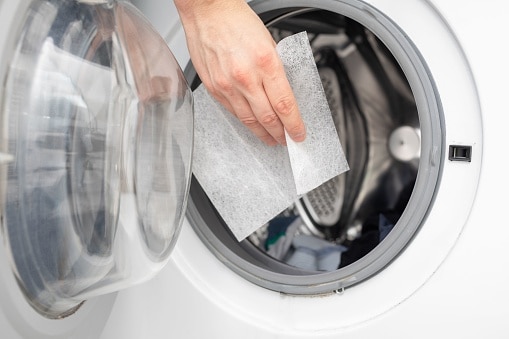
Wash clothes in hot water and dry on high heat before storing them.
©Wirestock/ via Getty Images
Before storing your clothing, wash them in extra hot water and dry them on high heat. The heat will kill any larvae and eggs. For items that can’t be washed or dried, place them in the freezer for one day.
9. Call Pest Control

©Andrey_Popov/Shutterstock.com
Even after doing everything you possibly can to control a moth infestation, it may still not be enough. If your infestation is out of control or you just need some extra help, contact a pest control specialist.
How are Moths Beneficial to the Ecosystem?
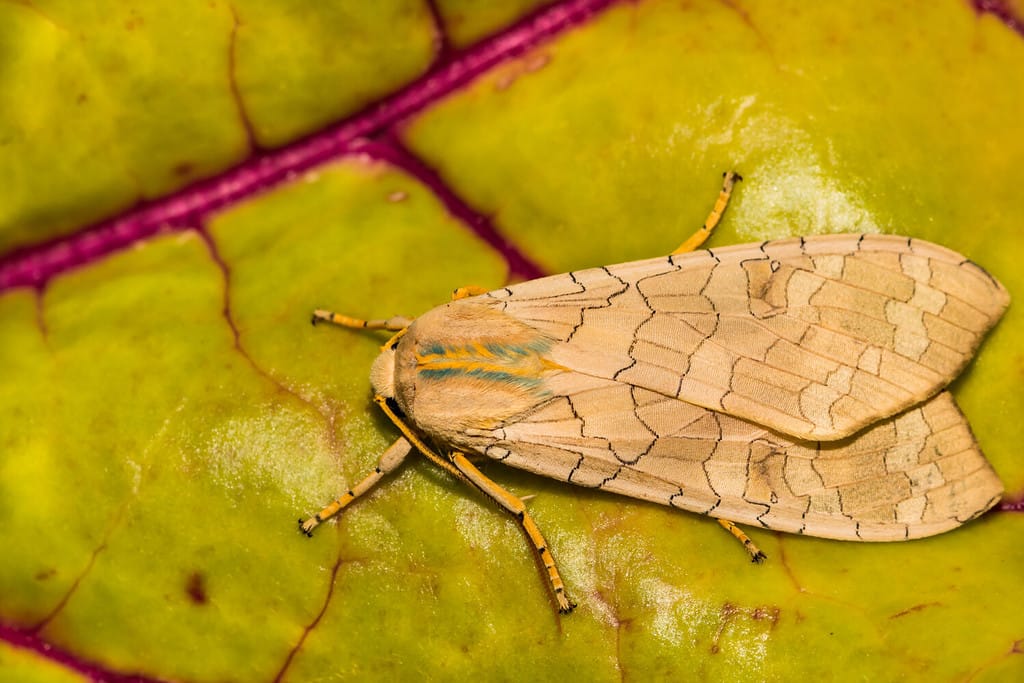
You might not want moths in your house, but outside, they are very beneficial to the ecosystem.
©Jay Ondreicka/Shutterstock.com
Moths are essential to the ecosystem, as they play an important role in pollination and nutrient cycling. Moths help spread pollen between plants, allowing them to reproduce and create new life. This helps keep our natural environment healthy and vibrant. By transferring nutrients from one plant or flower to another, moths also help maintain the balance of various ecosystems by providing a food source for other animals in the area.
Moth larvae are also beneficial for the decomposition of organic matter, such as leaves and other plant material, which helps to create the nutrient-rich soil that plants rely on for growth. As they break down organic matter, moths also release essential compounds such as nitrogen and phosphorus into the environment. This promotes healthy growth of local vegetation and can help reduce erosion caused by wind or rain.
Moths are also food sources for many animals in their habitats, including bats, birds, frogs, fish, reptiles, and even mammals like foxes. By providing these predators with an available food source, moths help to keep predator and prey populations in balance. This is essential for maintaining a healthy ecosystem as too many predators can quickly deplete the population of their prey animals, while too few predators can result in an unchecked expansion of certain species.
The photo featured at the top of this post is © Thomas Kleidysz/Shutterstock.com
Thank you for reading! Have some feedback for us? Contact the AZ Animals editorial team.






